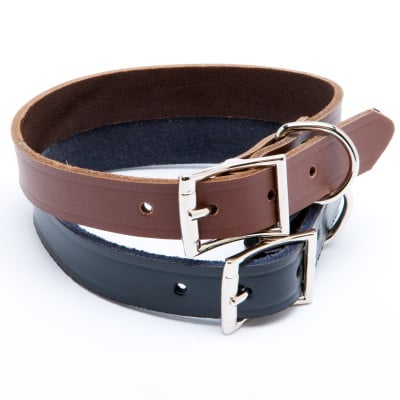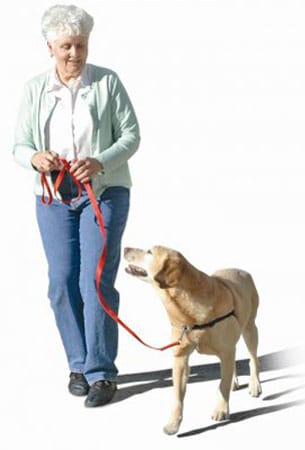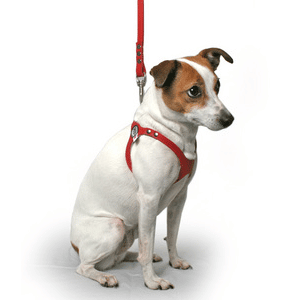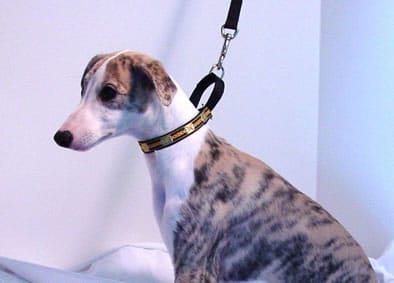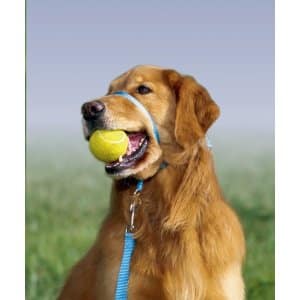Confused by the myriad of options at the pet store when it comes to buying the right collar for your dog? Here’s a brief introduction and review of the common types of humane collars and harnesses on the market, how they work, and what they’re best for.
Flat Collar, Buckle Collar
What is it? A basic collar that goes around the neck of the dog. They can be fastened with belt-style buckles or clips.
What are they good for? Simple and inexpensive. Can be used to keep tags/ID on a dog in conjunction with harnesses or a head collar. Flat collars are best used for small to large dogs that can loose leash walk reliably.
What are the downsides? Dogs that aren’t trained to loose leash walk can choke themselves, causing stress to the eyes, neck, trachea, and even thyroid. This is especially dangerous for flat faced dogs that can suffer from a prolapsed eyeball from the pressure.
Front Clip Harness (Sense-ation Harness, Easywalk Harness, Freedom Harness)
What is it? A harness where the leash fastens to the chest. The design of the harness discourages pulling.
What are they good for? All dogs! But especially dogs that pull.
What are the downsides? Toy dogs, or short dogs will likely have their leash get caught between their legs frequently due to the attachment point. Harnesses can be chewed and destroyed if left on while unattended.
Rear Clip Harness (H-style harness, Vest harness, Buddy Belts, etc.)
What is it? A harness where the leash fastens to the back of the harness (along the dog’s back).
What are they good for? Toy dogs, or very short dogs, to protect their fragile necks and keep the leash near the top of the dog so they don’t get caught up between their legs.
What are the downsides? Rear clip harnesses do not reduce pulling. Harnesses can be chewed and destroyed if left on while unattended.
Martingale Collar
What is it? A collar that has a limited-slip component that tightens the leash becomes taught. They slip over the dog’s head.
What are they good for? Dogs with thick necks and small heads (sighthounds) that can back out and slip out of flat collars.
What are the downsides? Frequently they are misused as choke collars (sized too small, when tight, can choke and even suffocate a dog). Dogs can get caught in a martingale collar and hang themselves.
Head collar (i.e. Halti, Gentle Leader, Snoot Loop)
What is it? A collar that loops behind the dog’s ears and over their muzzle.
What are they good for? Dogs that are mildly reactive to various stimuli (dogs, people, cats, squirrels, etc.) as if required, you can redirect the dog’s gaze. By design they also discourage pulling, even more so than a front clip harness.
What are the downsides? Head collars attach to a very sensitive part of a dog’s neck and if the handler jerks the leash, or a dog lunges on the leash while wearing a head collar, their neck can be injured. Many people mistake the muzzle loop as a muzzle and may think your dog is aggressive.

